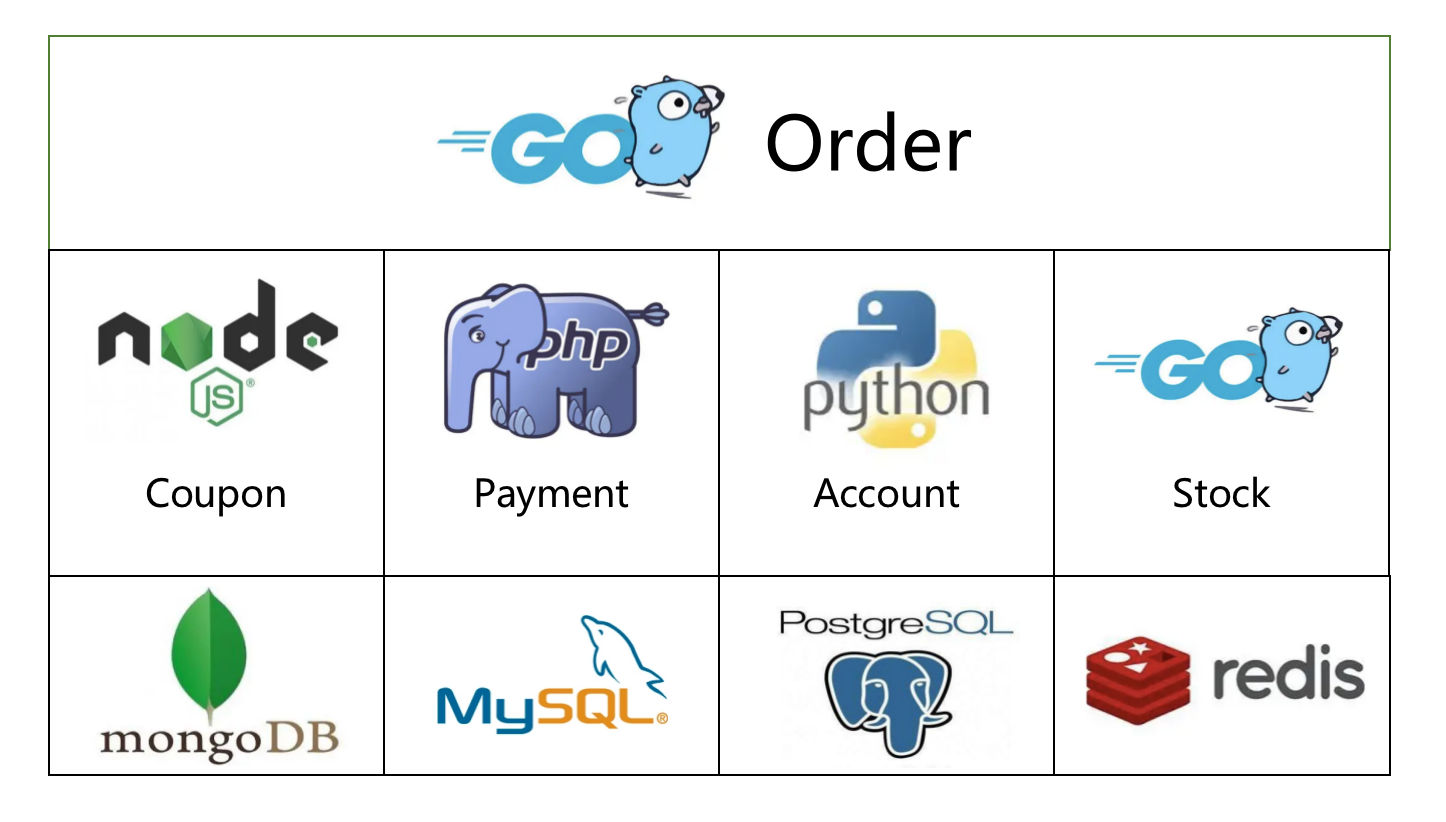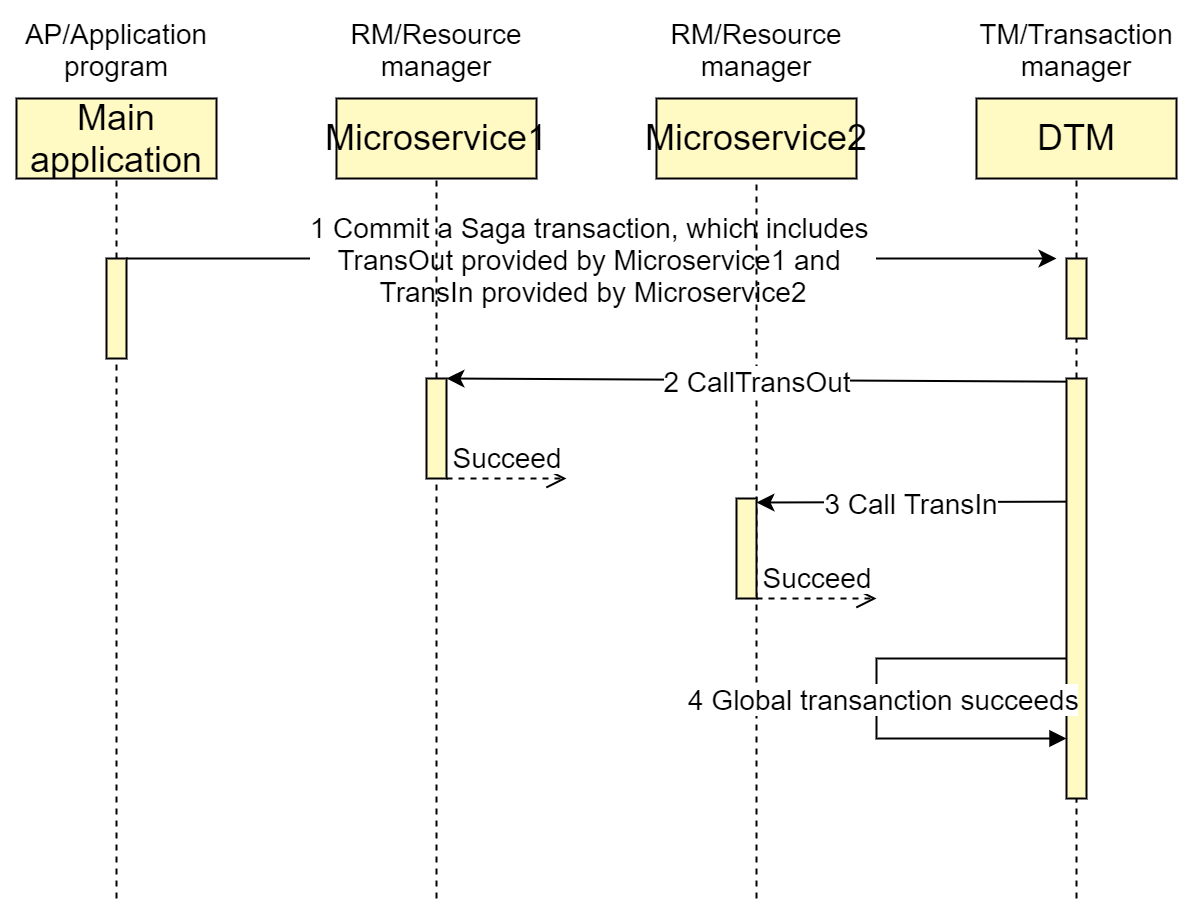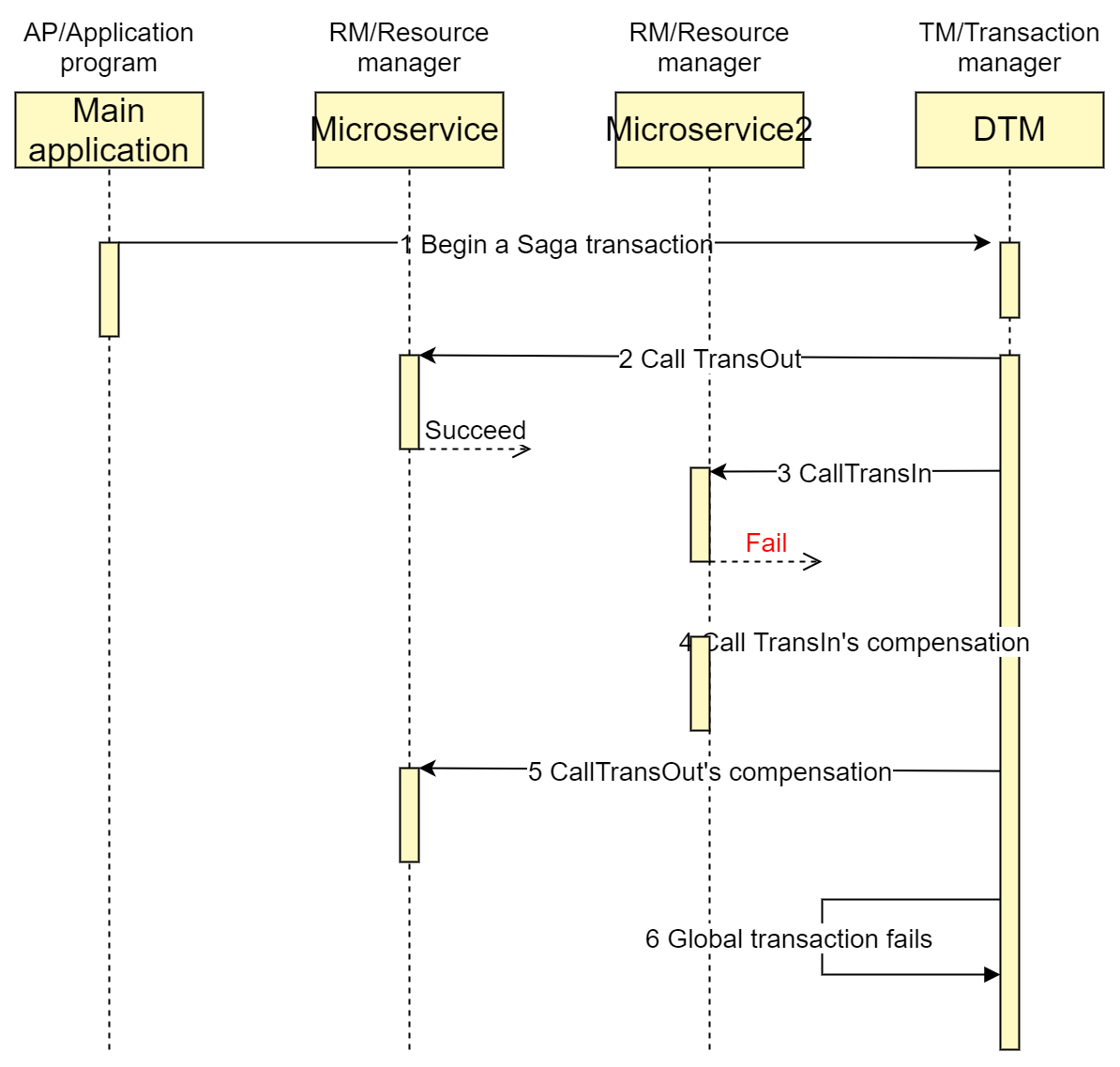English | 简体中文
DTM is a distributed transaction framework which provides cross-service eventual data consistency. It provides saga, tcc, xa, 2-phase message, outbox patterns for a variety of application scenarios. It also supports multiple languages and multiple store engine to form up a transaction as following:
git clone https://github.com/dtm-labs/dtm && cd dtm
go run main.goSuppose we want to perform an inter-bank transfer. The operations of transfer out (TransOut) and transfer in (TransIn) are coded in separate micro-services.
Here is an example to illustrate a solution of dtm to this problem:
git clone https://github.com/dtm-labs/dtmcli-go-sample && cd dtmcli-go-sample
go run main.go // business micro-service address
const qsBusi = "http://localhost:8081/api/busi_saga"
// The address where DtmServer serves DTM, which is a url
DtmServer := "http://localhost:36789/api/dtmsvr"
req := &gin.H{"amount": 30} // micro-service payload
// DtmServer is the address of DTM micro-service
saga := dtmcli.NewSaga(DtmServer, shortuuid.New()).
// add a TransOut subtraction,forward operation with url: qsBusi+"/TransOut", reverse compensation operation with url: qsBusi+"/TransOutCom"
Add(qsBusi+"/TransOut", qsBusi+"/TransOutCom", req).
// add a TransIn subtraction, forward operation with url: qsBusi+"/TransIn", reverse compensation operation with url: qsBusi+"/TransInCom"
Add(qsBusi+"/TransIn", qsBusi+"/TransInCom", req)
// submit the created saga transaction,dtm ensures all subtractions either complete or get revoked
err := saga.Submit()When the above code runs, we can see in the console that services TransOut, TransIn has been called.
A timing diagram for a successfully completed SAGA transaction would be as follows:
If any forward operation fails, DTM invokes the corresponding compensating operation of each sub-transaction to roll back, after which the transaction is successfully rolled back.
Let's purposely fail the forward operation of the second sub-transaction and watch what happens
app.POST(qsBusiAPI+"/TransIn", func(c *gin.Context) {
log.Printf("TransIn")
// c.JSON(200, "")
c.JSON(409, "") // Status 409 for Failure. Won't be retried
})The timing diagram for the intended failure is as follows:
The above example mainly demonstrates the flow of a distributed transaction. More on this, including practical examples of how to interface with an actual database, how to do compensation, how to do rollback, etc. please refer to dtm-examples for more examples.
Join the chat via https://discord.gg/dV9jS5Rb33.
If you think this project is interesting, or helpful to you, please give a star!



